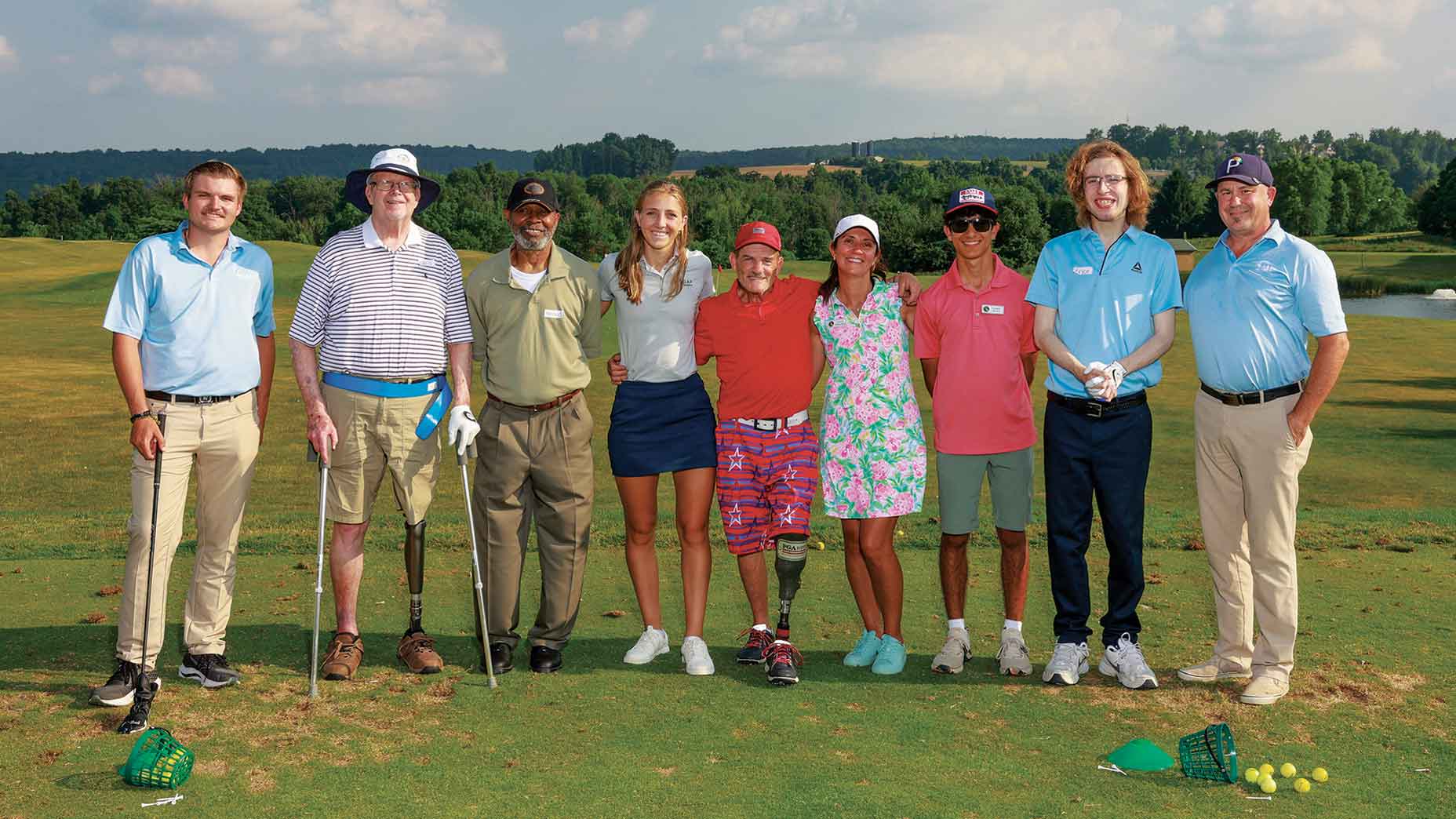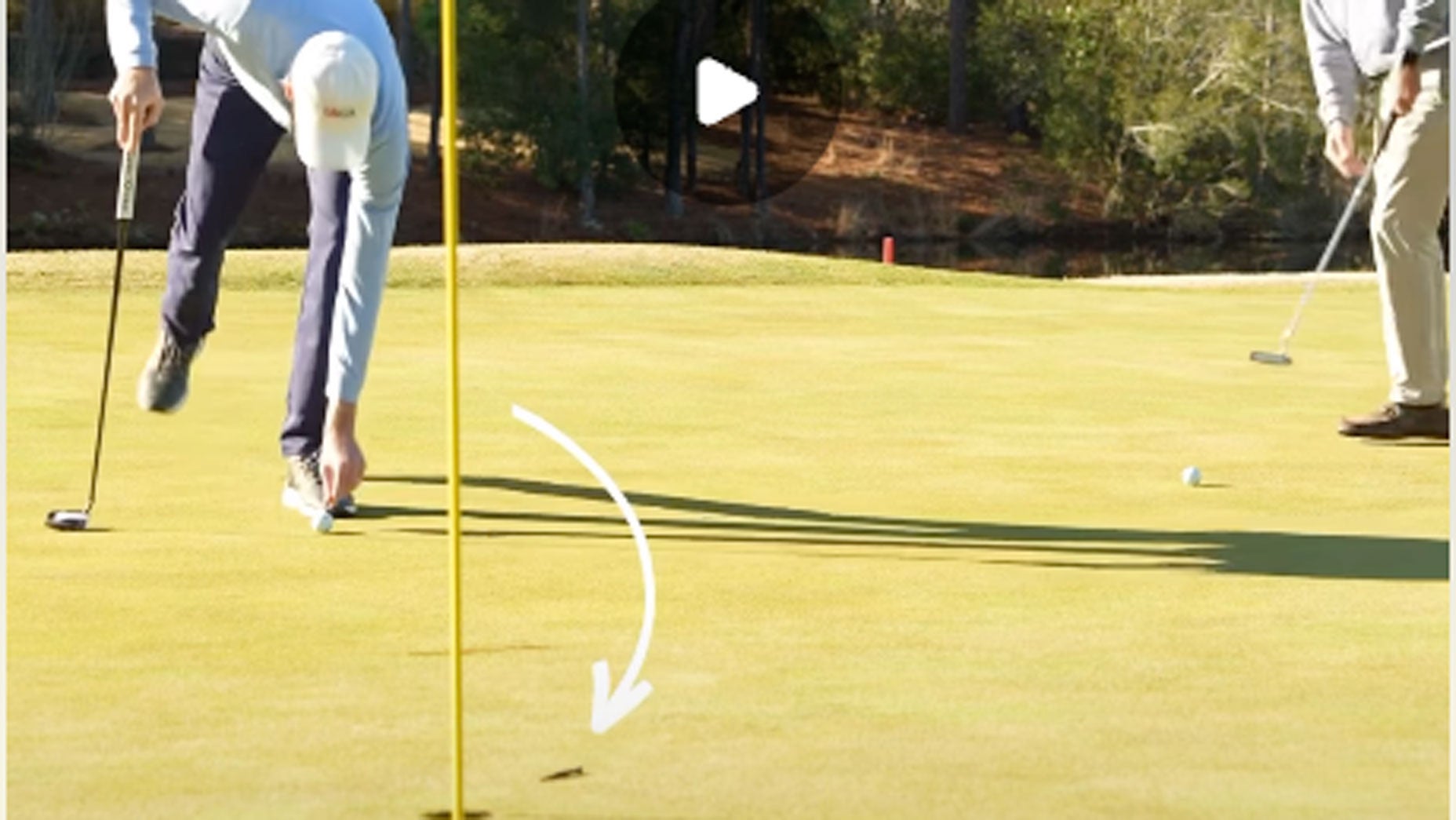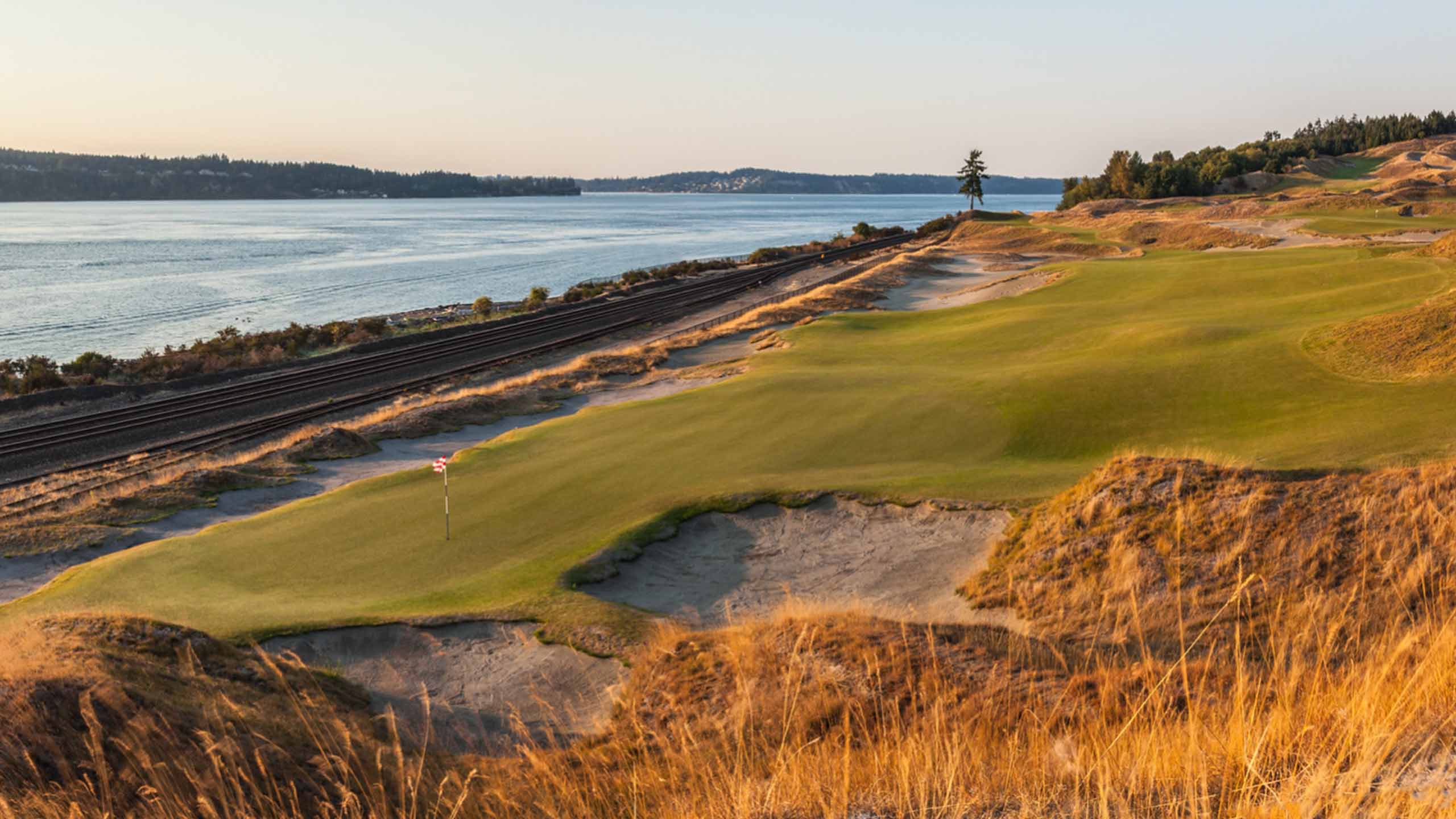This content was first published in Golf Journal, a quarterly print publication exclusively for USGA Members. To be among the first to receive Golf Journal and to learn how you can ensure a strong future for the game, become a USGA Member today!
While growing up, Anna Kittelson had two primary passions: golf and helping people with disabilities. Her first passion began at age 12, when Kittelson’s grandfather invited her to a driving range and she discovered her natural ability for the game.
Her second passion started around the same time, when she served as a volunteer for the Special Olympics. Later, as a high school student, Kittelson participated in a class called Peer Assistance and Leadership, which enabled her to help fellow students with disabilities, and she also volunteered at a camp for individuals with disabilities.
During her senior year of college, Kittelson served as a caretaker for a child with autism — even spending time hitting balls at the range with him, echoing her introduction to the game with her grandfather. With these two passions firmly ingrained, Kittelson sought some way to combine them in a future career.
After playing golf at Midwestern State University and the University of Delaware and earning a B.A. in exercise science, Kittelson realized that the medical field wasn’t a good fit. She decided to take a job as a pro shop attendant at Bidermann Golf Club in Wilmington, Del., an opportunity that would change her life.
While at Bidermann, Kittelson began to search for opportunities that would fulfill her desire to help others, especially people with disabilities. Discussing her interests with Anthony Malizia, Bidermann’s head golf professional, he mentioned the USGA’s U.S. Adaptive Open Championship.
Are you an average golfer? Here’s what the stats sayBy: Bill Pennington
Researching the event, Kittelson knew she had to become involved in some way. Luckily for her, Malizia had recently met with Mario Machi, assistant executive director of the Golf Association of Philadelphia (GAP), which was interested in adding adaptive golf — which enables individuals with cognitive, health, physical and sensory challenges to partake in the game through modified equipment and rules — as a new program offering. Shortly after meeting Machi, Kittelson received a P.J. Boatwright Jr. Internship, enabling her to serve GAP as an adaptive golf intern.
Halfway through her year-long internship, she was offered a full-time role as GAP’s manager of adaptive golf. Since beginning the job this January, Kittelson has been focused on serving the region’s roughly 350 adaptive golfers.
“Golf is one sport that everyone can play together, whether they have a disability or not,” Kittelson said. “We want to introduce the game to this underrepresented community.”
To do so, GAP is preparing to host a tournament on Oct. 14-15 that will have a format similar to the U.S. Adaptive Open. Set to be held Lookaway Golf Club and Doylestown Country Club in Bucks County, Pa., the tournament will further increase opportunities for those in the adaptive golf community.
GAP is also working to introduce golf to people with disabilities, yet another means of increasing the participant base. This year, it hosted more than 14 “No Limit Clinics” — designed to prove that anyone can play, the clinics are 90 minutes and taught by PGA professionals. For 45 minutes, new adaptive golfers learn on the range, hitting shots with various clubs, followed by another 45 minutes of chipping and putting. Each clinic is tailored to attendees’ goals and skill levels.
“It’s all about building the adaptive golf community and helping people make new friends. Hopefully they’ll catch the golf bug as well and play in adaptive tournaments,” said Kittelson. “Above all else, we want to eliminate barriers to entry and promote a more inclusive, accessible game.”
With these goals in mind, Kittelson hired Tyler Cashman as a summer intern in 2024. An adaptive golfer with a visual impairment who has played in the last two U.S. Adaptive Opens, Cashman met Kittelson at the Eastern Regional, an amputee and adaptive golf tournament.
“The U.S. Adaptive Open’s impact on adaptive golf has been huge, as the total number of adaptive golfers has significantly increased since it began,” Cashman said. “By offering adaptive golfers an opportunity to play at a higher level, it’s shined a lot more light on what we can do. I hope it will continue to break any stereotypes about what people with disabilities can achieve on the golf course.”
Breaking stereotypes – for good
The USGA began its involvement with adaptive golf more than 30 years ago. In 1991, it launched a grants program to provide financial assistance to nonprofit organizations dedicated to assisting golfers with disabilities, and in 1997, it introduced “The Modified Rules of Golf for Players with Disabilities.”
The USGA continued to increase its involvement in two primary ways. In 2019, along with The R&A, the organizations began administering the World Ranking for Golfers with Disabilities (WR4GD) through the World Amateur Golf Ranking (WAGR). Two years earlier, in 2017, it had committed to changing adaptive golf forever.
That year, during its Annual Meeting, the USGA pledged to create a new national championship for the adaptive golf community. Although Covid-19 delayed its introduction, the USGA’s pledge was realized when the U.S. Adaptive Open debuted in July 2022 on Pinehurst Resort & Country Club’s Course No. 6.
Since that debut and subsequent installments at Pinehurst in 2023 and Sand Creek Station in Kansas in 2024, adaptive golf’s popularity and profile have risen substantially. According to Stephanie Parel, the championship director of the U.S. Adaptive Open for the USGA, nearly 700 Americans are currently certified adaptive golfers. As recently as 2018, that number stood at 2.
What happens when a golf course’s most precious resource grows sparse?By: Jessica Marksbury
During this period, the number of U.S.-based WR4GD Counting Events has risen from roughly 12 to more than 30. Many of these events are sponsored or conducted by the USGA’s network of Allied Golf Associations (AGAs) around the country.
“When the USGA started the U.S. Adaptive Open, one AGA had an adaptive championship,” said Parel. “By the end of this year, there will be eight — and more are on the way in 2025.”
As she reflects on the last two years, Kittelson believes the U.S. Adaptive Open’s impact on the local level is undeniable, as it leads people like her to become passionate about the concept and its potential.
“There are so many people with disabilities who hadn’t thought about golf before, but now they’re involved,” she said. “And they’re playing with people who don’t have disabilities, which is great for the entire golf community, as people are coming from all walks of life and simply enjoying the game with each other.”
Parel agrees, adding that the game has not only become “more welcoming, accessible and inclusive,” but golf facilities have, too, ensuring that everyone who wants to play can feel comfortable doing so.
“Adaptive golfers’ stories have been incredibly inspirational and motivational,” said Parel. “They’ve reminded us — the overall golf community — of everything we love about the game: camaraderie, integrity, perseverance and playing for the pure joy of it.”
A community of fierce competitors
Parel believes that, along with U.S. Adaptive Open golfers’ obvious interest in friendship and fellowship, they are also some of the most competitive golfers she’s met.
“Don’t let their outgoing personalities fool you; they are fierce competitors,” she said.
In fact, Parel has found that their competitiveness has increased, especially as more adaptive golfers participate in tournaments, leading to lower scores with each passing year.
“Once we’re off the course, we’re a big community,” Cashman said. “But when we’re on the course, it’s a very competitive atmosphere.”
To wit: at the 2023 U.S. Adaptive Open, Kipp Popert of England won the men’s title by a single stroke with a 54-hole total of 2-under-par 214.
Matt Vanderpool, CEO of the Georgia State Golf Association (GSGA), has observed this strong will to win firsthand. Since 2019, the GSGA has hosted the Georgia Adaptive Open, which some adaptive golfers consider to be one of the world’s top five adaptive tournaments.
After hosting the event at the nine-hole Bobby Jones Golf Course in Atlanta for four years, this June the GSGA held it at the Retreat Course, an 18-hole layout at Georgia’s Sea Island Resort. Its field size was increased from 36 to 60, and 88 golfers had registered for it by February, further proving adaptive golf’s ever-rising popularity.
“I believe adaptive golf’s profile will continue to increase exponentially over the next five years,” said Vanderpool. “The U.S. Adaptive Open has brought a lot of attention to adaptive golf, and with more AGAs around the country adding adaptive competitions and programming, there will be more opportunities for adaptive golfers to learn and enjoy the game locally.”
Parel has also noticed that more AGAs are becoming involved with grassroots programming, leading to new golfers. In particular, she thinks AGAs will promote adaptive golf to more juniors and women moving forward.
“Adaptive golf is bursting at the seams,” she said. “The interest and support from the traditional golf community, foundations and sponsors are enormous.”
As more AGAs prepare to launch tournaments, Kittelson is focused on doing what she can to help each foster both competition and community — the type of community adaptive golf is known for.
“We should all work together to ensure we’re doing everything for the betterment of every adaptive golfer,” concluded Kittelson. “There are so many talented athletes becoming involved. Each AGA should do everything it can to provide them the best experiences possible, while we all continue to create an inclusive, fun and competitive environment.”












